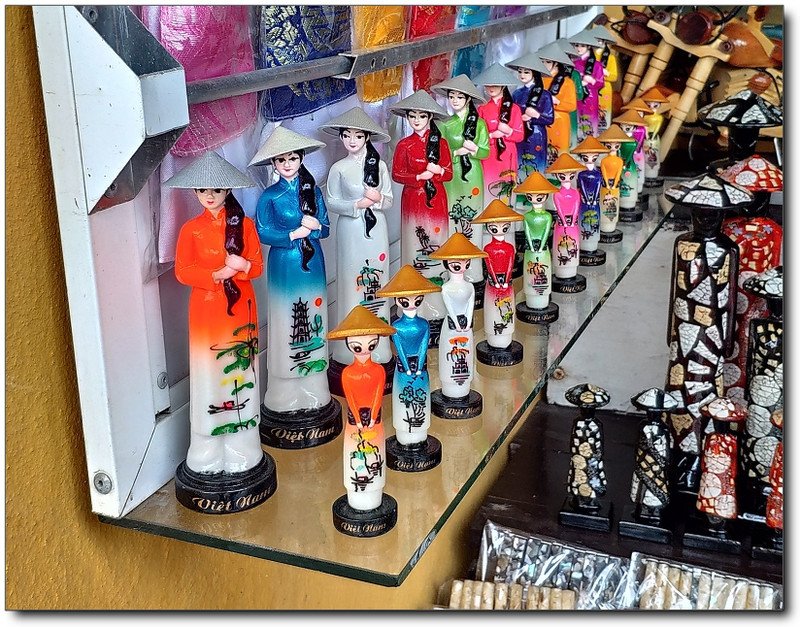What kind of place must a city be to be named one of the “50 Places of a Lifetime” by National Geographic?
Hoi An offers a unique experience with its UNESCO World Heritage-listed ancient town, vibrant French colonial architecture, street-side coffee for under $2, and colorful silk lanterns hanging everywhere. Being in Hoi An feels like stepping into a bright and beautiful dream.
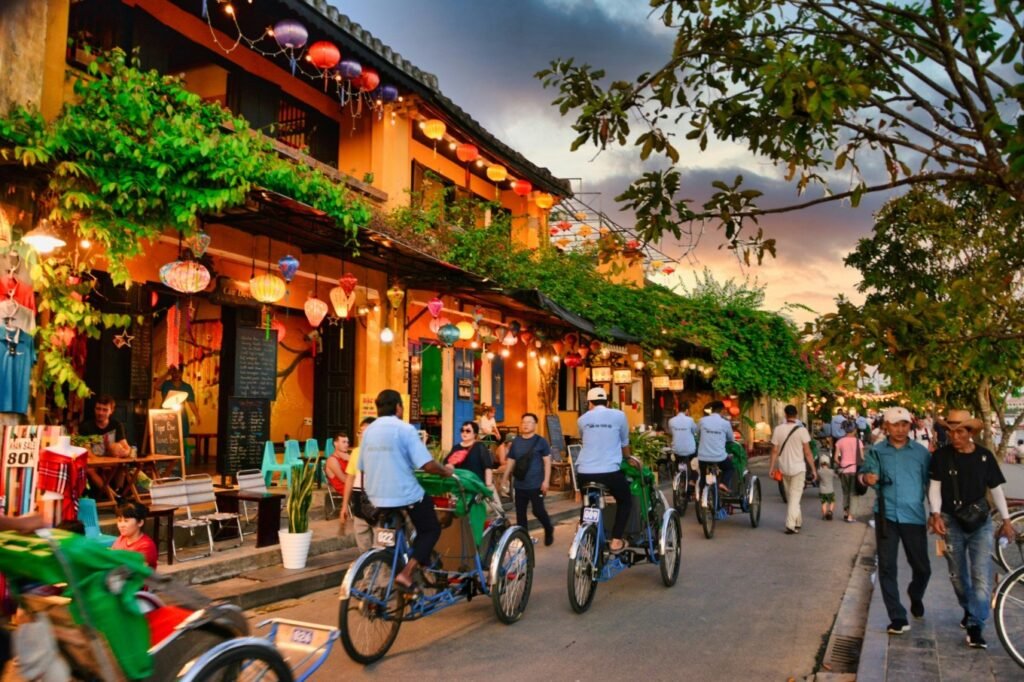
UNESCO World Heritage Ancient Town: Hoi An
Hoi An is a city in central-southern Vietnam, located 30 kilometers from the coastal city of Da Nang. It was once the trade port of the ancient Champa Kingdom, historically known as “Dai Chiem Seaport.” As early as the 17th century, Hoi An, along with Malacca, became one of the most important trading hubs in Southeast Asia.

If traveling by air, you’ll need to fly to Da Nang first, followed by a 40-minute drive to Hoi An. Though slightly inconvenient, the charm of this coastal city draws visitors from all over the world. In 2023, Hoi An welcomed nearly 362,000 tourists, with most visitors coming from Europe, the United States, South Korea, and a smaller proportion from China.
Many ancient buildings in Hoi An resemble the architectural style of southern Chinese towns. In fact, Hoi An was Vietnam’s earliest Chinatown, and in the 17th century, it became a key settlement for Chinese merchants arriving in Vietnam. Some of these merchants chose to settle permanently, and even today, many elderly residents speak Chinese. They are often happy to chat with Chinese visitors, sharing local stories or offering directions.

For this reason, Chinese-style architecture can be found throughout Hoi An. The various Chinese assembly halls, distinguished by their traditional architectural features, are especially eye-catching. These include the Fujian Assembly Hall, Guangdong Assembly Hall, Chaozhou Assembly Hall, Qiongfu Assembly Hall, and the Chinese Assembly Hall, which represents five different Chinese groups. In addition, there are temples dedicated to Guan Yu, Buddhist temples, and ancestral halls for various family clans.
Since Hoi An was neither damaged by war nor altered for the construction of modern high-rises, these ancient buildings remain remarkably well-preserved.

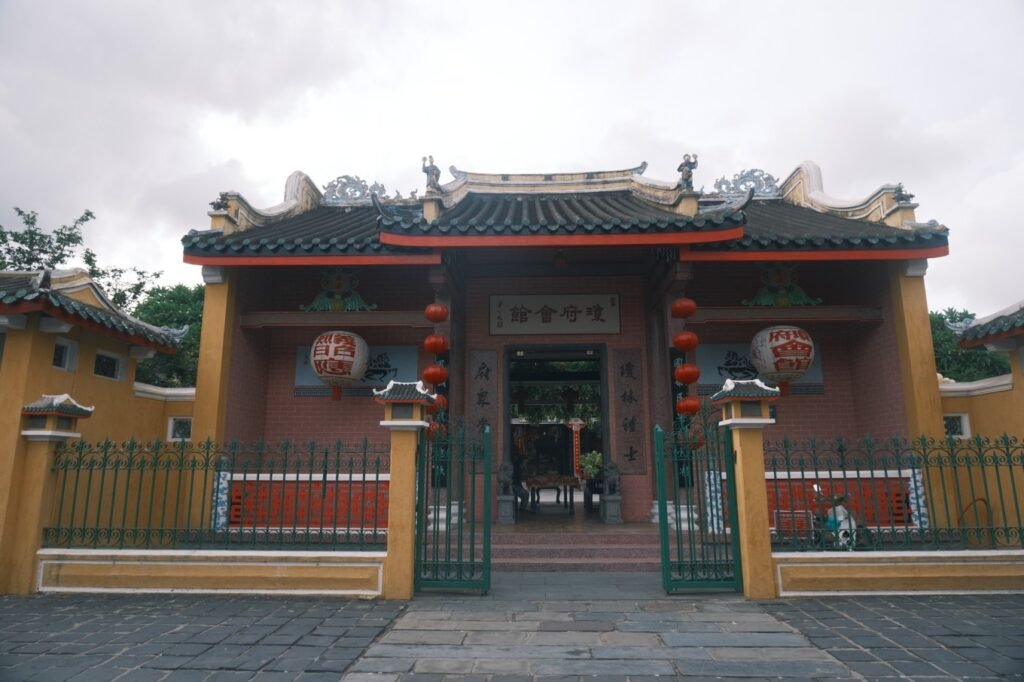

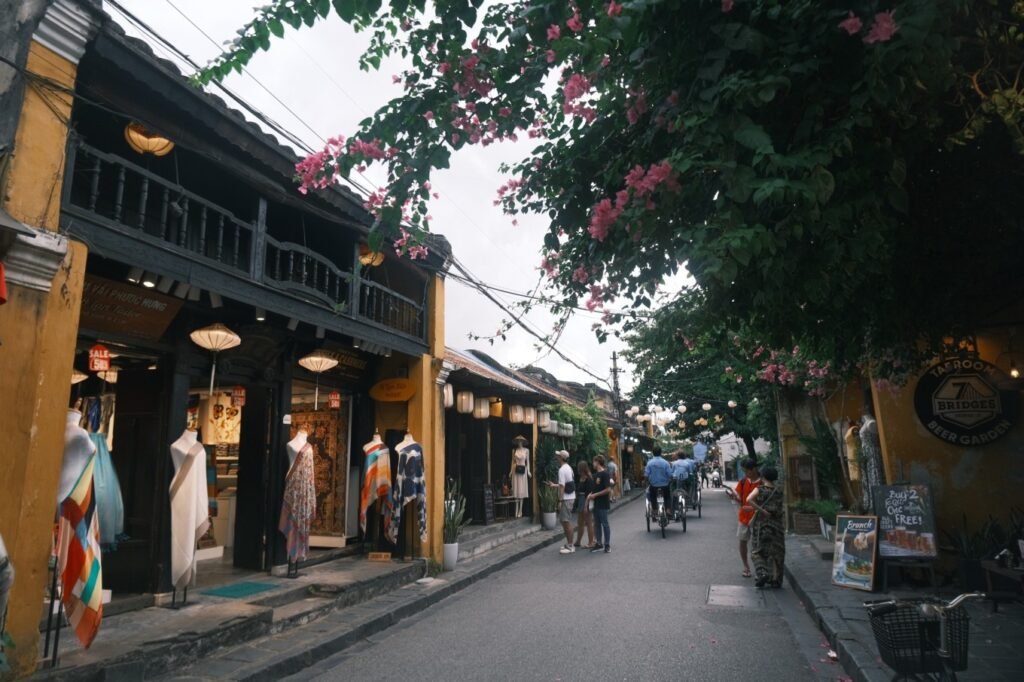
In addition to Chinese-style architecture, Hoi An’s ancient town features Japanese, French, and Vietnamese architectural elements. The town’s network of interconnected streets is lined with diverse bars, cafes, Ao Dai clothing shops, and stores selling local handicrafts. It blends rustic charm and elegance with the rhythms of local life, making visitors feel as though they’ve stepped into a dream of the South Seas.


The most beautiful time of day in Hoi An begins at dusk. Over the Thu Bon River, the sky is painted by the sunset, shifting from warm shades of orange and yellow to a tranquil deep blue. As the sunlight fades, the glow of colorful lanterns takes its place. Boats that lay still during the day come to life, with boatmen hanging lanterns and inviting passersby for a ride. Along the riverbank, women light candles and carefully place them in floating lanterns. Each lantern carries a heartfelt wish, drifting gently along with the river’s flow into the distance.
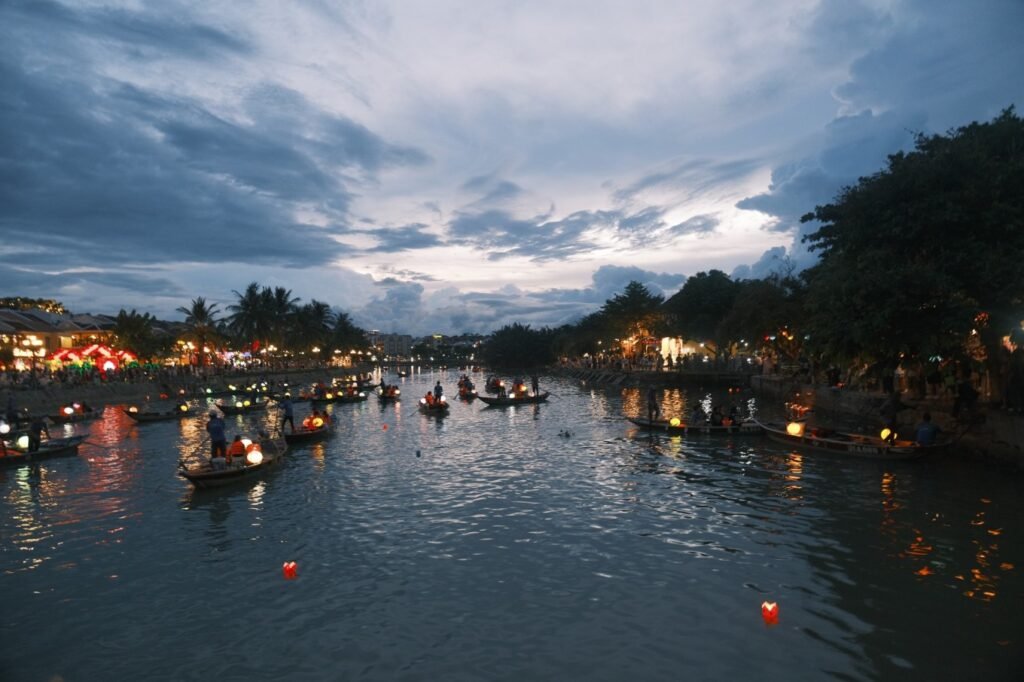

With a population of less than 100 million, Vietnam ranks first in beer consumption in Southeast Asia. Due to the consistently hot weather, Vietnamese people love drinking chilled beer. Despite its relatively small population, Vietnam ranks ninth in global beer consumption, with an average per capita consumption of 32 liters in 2023, leading all Southeast Asian countries.
Why do the Vietnamese love beer so much? The answer traces back to the period when Vietnam was under French colonial rule. In 1875, a Frenchman named Victor Larue founded the first small brewery in Saigon (now Ho Chi Minh City), though it remained relatively modest in size at the time. It wasn’t until 1977 that the brewery was expanded and officially established as the Saigon Beer Factory. After 39 years of growth, the brewery successfully went public in 2016.
Today, Bia Saigon is one of Vietnam’s oldest and most iconic beer brands, deeply embedded in the country’s drinking culture.


The second brewery, Hommel Brewery, was founded in 1890 by French colonists. After the Vietnamese government took over, it was renamed Hanoi Brewery (Habeco), and the beer became known as Hanoi Beer (Bia Hanoi).
Saigon Beer and Hanoi Beer, named after the most famous cities in southern and northern Vietnam, respectively, dominate their regions. Due to geographical preferences, northerners are more accustomed to Hanoi Beer, while southerners prefer Saigon Beer. In the central region, Hue produces its own local beers like Huda and Festival, though they are not as popular as the two major brands.
Vietnam’s overall prices are relatively low, and beer is no exception. The average price per bottle is less than $1, available at convenience stores and roadside stalls. Vietnamese people often pour beer into glasses with ice, both to cool down and to make it last longer, as local beers tend to have a stronger taste.
Hanoi Beer has an alcohol content of about 4.6%, which is diluted when ice is added. Hue beer offers a rich malt flavor. Saigon Beer, with 4.9% alcohol, includes rice in addition to water, malt, and hops, leaving a faint rice aroma in the aftertaste. Besides Saigon Beer, the south is also known for the popular 333 Beer. Many tourists seek it out specifically for its malt-heavy yet smooth taste, with an alcohol content of 5.3%.
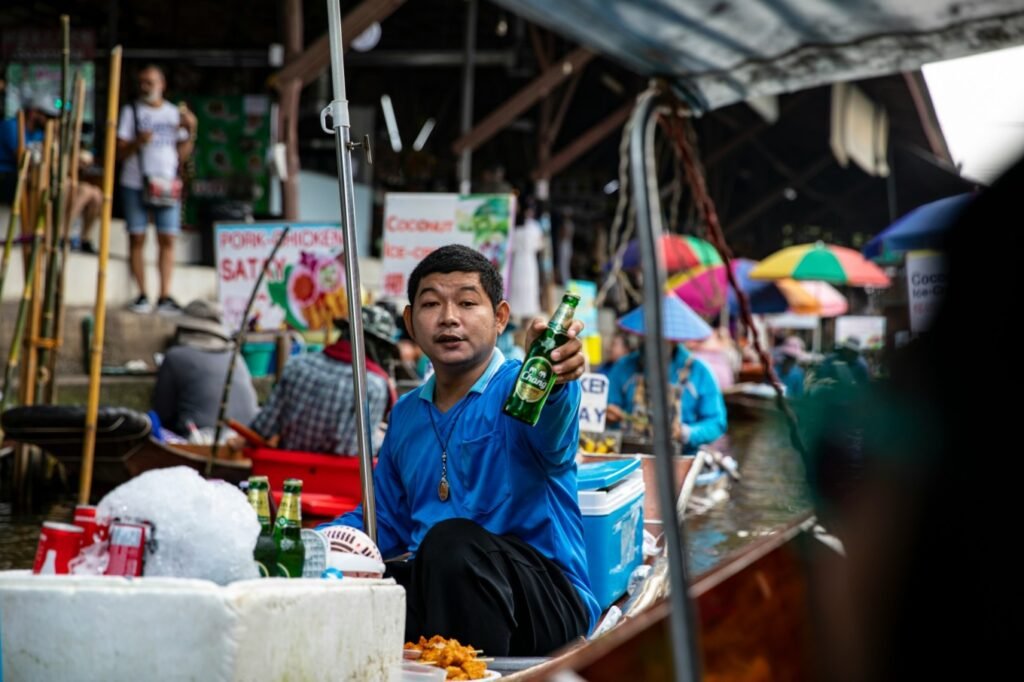

Aside from beer, it’s common to see people sitting at street corners enjoying coffee throughout Vietnam. Unlike China, which primarily uses Arabica beans, many Vietnamese coffee shops focus on Robusta beans. These beans undergo a deep roasting process, resulting in a bold and intense flavor. Traditional Vietnamese coffee is made using a drip filter, with coffee dripping slowly into the cup over about 10 minutes. A layer of condensed milk is usually poured at the bottom of the cup, allowing the coffee to blend with it during the dripping process. However, some coffee shops prepare black coffee in advance to save customers from waiting too long.

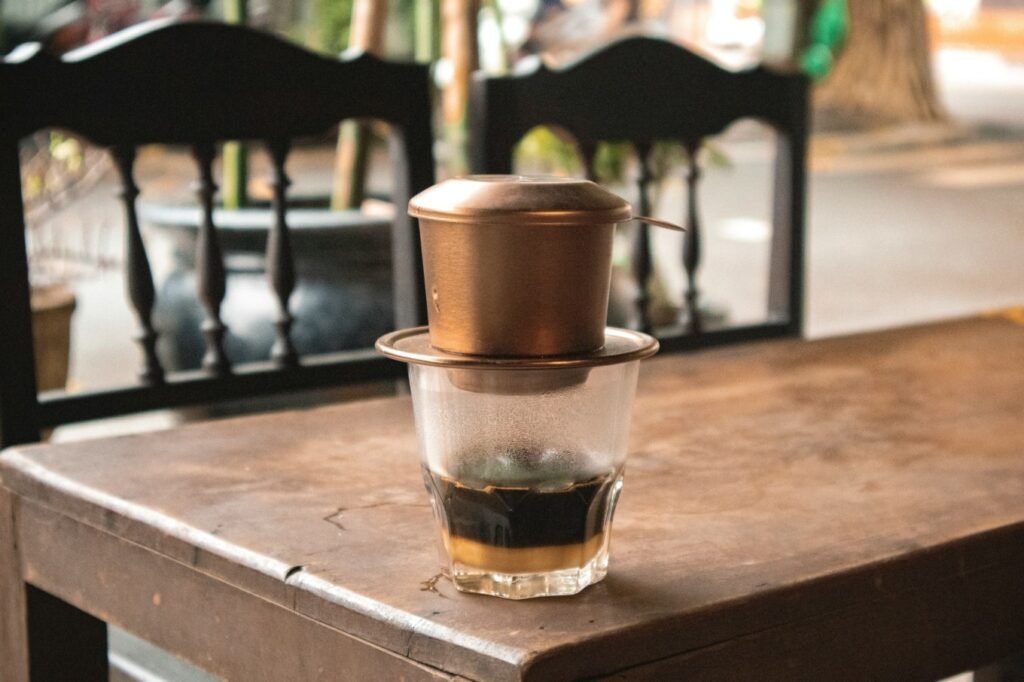
In addition to traditional Americanos and lattes, three types of coffee are particularly popular in Vietnam: salted coffee, coconut coffee, and egg coffee.
Salt Coffee is made by adding condensed milk and salted buttercream to the coffee. The taste is similar to a coffee topped with a salted cream cap, but with the addition of condensed milk, the overall flavor becomes quite sweet and rich.
Coconut Coffee combines coconut flesh and coconut water, blended with milk into a slushy consistency, and then mixed with black coffee. The result tastes like a coconut milkshake.
Egg Coffee, often called the “Vietnamese cappuccino,” is made by adding raw egg yolks to condensed milk and whipping them until the mixture turns pale and fluffy. It is then layered over the coffee. The first sip is smooth and creamy, but some people find the flavor a bit eggy, so it’s recommended to try it with caution.
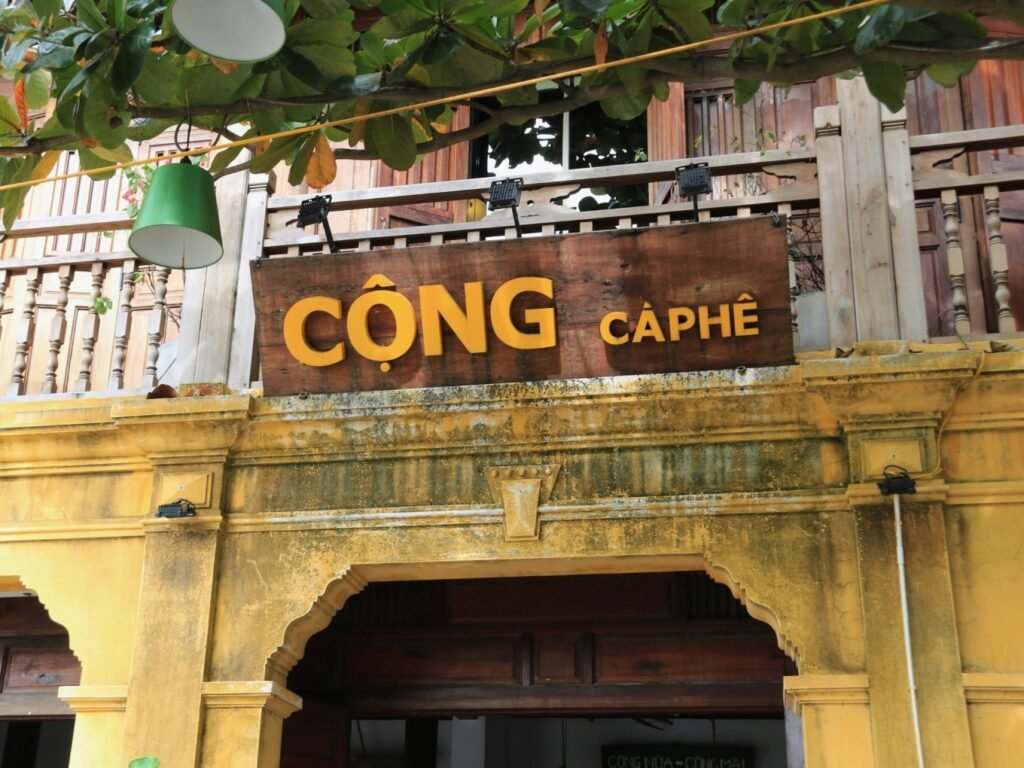
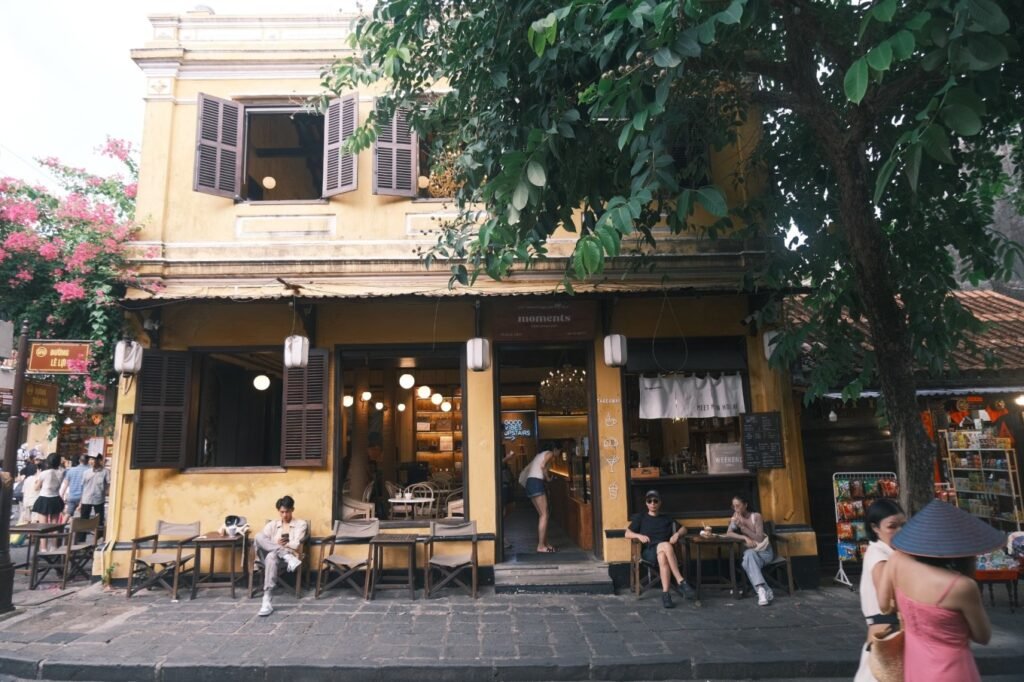
Although the process of making Vietnamese coffee is relatively intricate, the price is very affordable. Drinking coffee is a daily habit for the Vietnamese, and coffee shops are not considered upscale establishments. Most are located on street corners or along the roadside, with fairly consistent quality, so it’s rare to have a disappointing experience.
In Hoi An’s ancient town, there are many beautiful coffee shops. With bright yellow walls, cascading pink bougainvillea from the eaves, wooden doors and windows, and century-old buildings, enjoying a handcrafted coffee in such a setting costs no more than $1.5.
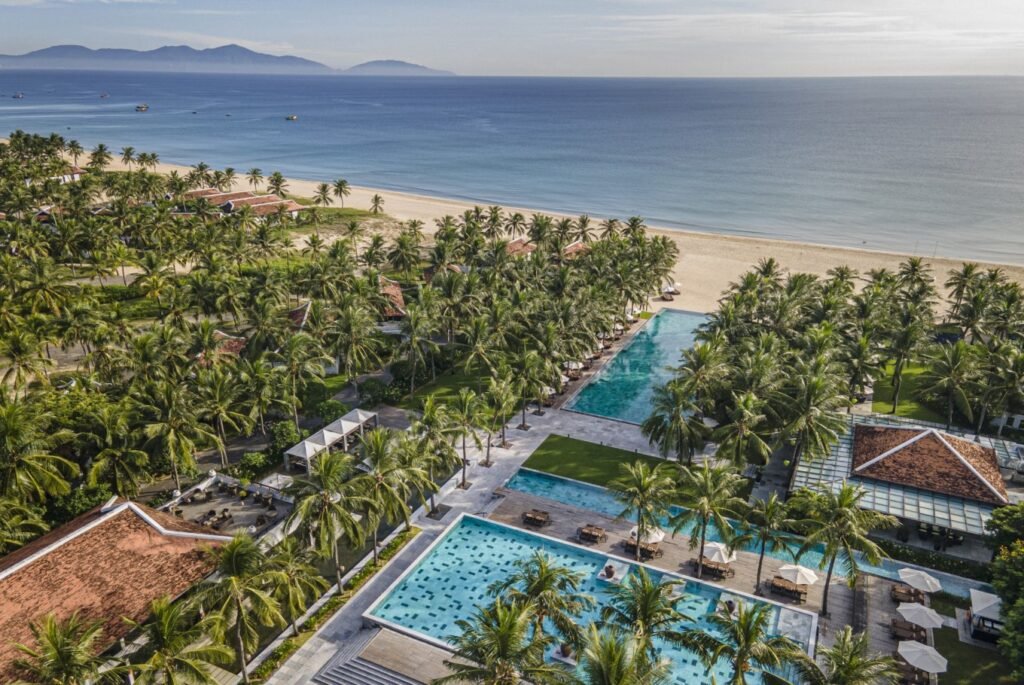

Hoi An is a paradise for tourism and relaxation, thanks to both its historical landmarks and cultural heritage. Additionally, the beaches along Da Nang’s coastline have been named one of the world’s six most beautiful beaches by Forbes magazine.
The beaches near Hoi An’s ancient town remain largely undeveloped, with pristine coconut groves and white sandy shores preserved in their natural state. Since the waves aren’t ideal for swimming, there are no noisy crowds or water sports. Visitors often take leisurely barefoot walks along the coastline at sunrise or sunset, enjoying the soft, fine sand that’s gentle on the feet. Small crabs and shells are often washed ashore, only to be swept back into the sea by the next wave.
Throughout the day, the color of the sea changes in fascinating ways. In the morning, under the rising sun, the water takes on a soft pink hue. At noon, it shifts from light blue to deep blue under the intense sunlight. By sunset, the sea transforms into a romantic shade of golden orange.
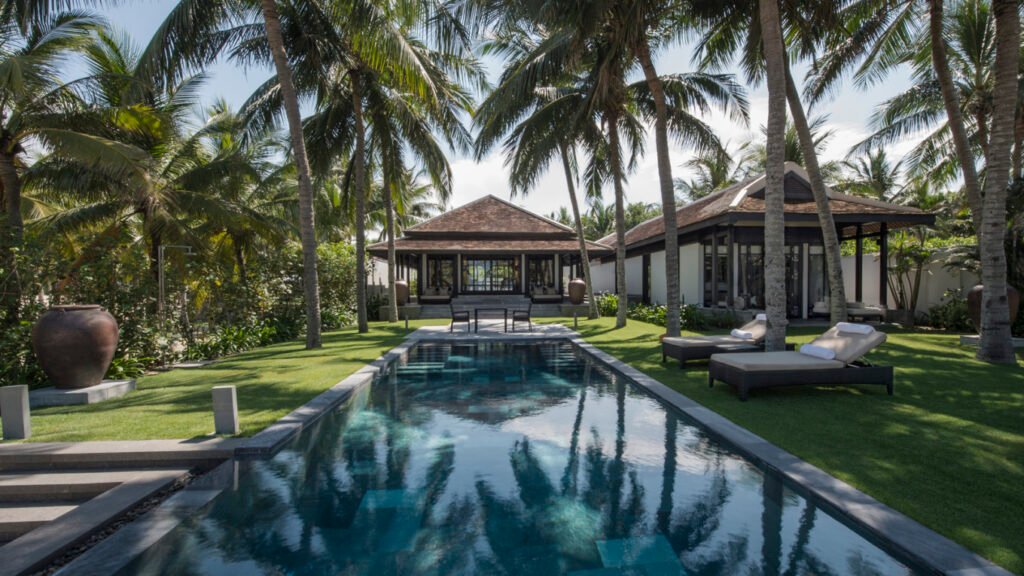

Hoi An offers a wide variety of accommodations to suit different preferences. Travelers who enjoy lively atmospheres often choose to stay closer to the ancient town, where hotels of all price ranges are available. Almost every hotel offers swimming pools and spa services, along with free bicycles for guests to explore the town by bike.
Larger resort-style hotels are typically located along the coastline, a bit farther from the ancient town. These resorts usually provide shuttle services to and from the town, allowing guests to escape the crowds and fully enjoy a peaceful island-like holiday.
The Four Seasons Resort The Nam Hai is nestled along the central coast of Da Nang, just a 15-minute drive from Hoi An’s ancient town. Unlike typical hotels, this resort consists entirely of standalone villas, with a total of 100 units. Forty of these villas feature private pools, with separate living and dining rooms, and each villa comes with a personal butler. The remaining 60 villas, though without pools, have private courtyards, offering a high level of comfort. All villas are tucked away in lush coconut groves, with views of the beach and ocean, ensuring both privacy and freedom for guests.
From the bustling ancient town to the tranquil beaches, Hoi An is like a vibrant painting, perfectly blending Vietnam’s history, culture, and natural beauty. It is a city where you’re encouraged to slow down and savor every moment. Hoi An awaits every traveler who loves life and seeks freedom, inviting them to discover its unique charm.
Beyond its geographical allure, it’s the people and stories across time that make it even more captivating.

